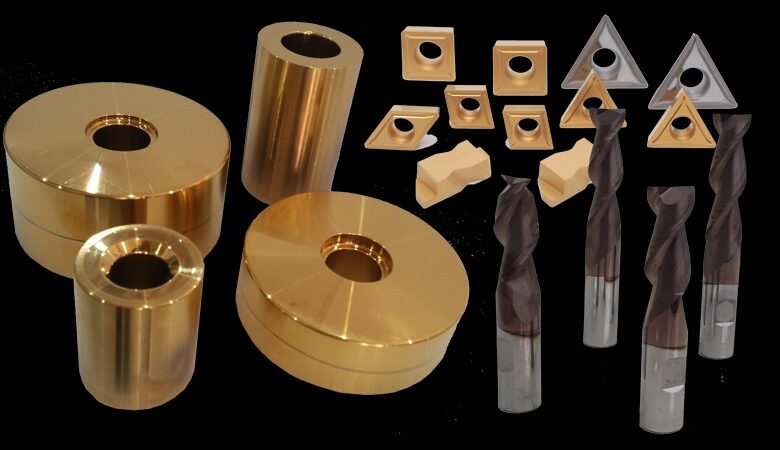How To Choose The Right PVD Coating Service Provider For Your Industry

Physical Vapor Deposition, or PVD, has become one of the most trusted methods for enhancing the durability, hardness, and performance of industrial components. From aerospace parts that endure extreme stress to precision cutting tools that must stay sharp under heavy loads, the right coating can make the difference between reliable performance and costly downtime. For companies seeking to outsource, the challenge is not whether to use PVD coating but how to select the best provider for the job.
Why The Choice Matters
Not all providers offer the same expertise, equipment, or quality standards. A poor decision can result in coatings that fail prematurely, inconsistent finishes, or components that do not meet industry safety and regulatory requirements. Choosing the right partner ensures coatings perform as expected, saving money in the long run and improving product reliability.
Evaluate Technical Expertise
The first factor to consider is the provider’s technical knowledge. A strong PVD coating servicepartner should have engineers and specialists who understand material science, surface engineering, and the specific requirements of your industry. Look for providers who can explain the differences between coatings such as TiN, TiCN, AlTiN, or DLC, and advise on which option will deliver the best results for your application.
Assess Industry Experience
Different industries face different challenges. Aerospace components must withstand heat and vacuum, automotive parts require wear resistance under constant friction, and medical devices must remain biocompatible and sterile. When evaluating a provider, ask whether they have experience delivering PVD coating solutions for your sector. Case studies, client references, and application-specific examples are valuable indicators of proven expertise.
Check Equipment And Technology
The performance of a coating depends heavily on the equipment used. Modern deposition systems can apply coatings with greater precision, uniformity, and efficiency. Outdated equipment may still function, but could produce inconsistent results. A reliable provider invests in advanced technology to ensure coatings are applied evenly, adhere properly, and meet the required thickness specifications.
Review Quality Certifications
Quality certifications demonstrate a provider’s commitment to standardized processes and regulatory compliance, particularly in industries such as aerospace, defense, and medical. Certifications like ISO 9001 or AS9100 are non-negotiable in these fields. These certifications confirm that the provider adheres to rigorous quality management systems and consistently delivers coatings that meet stringent standards.
Consider The Range Of Services
A good PVD coating service provider offers more than just the application itself. They should provide pre-treatment, such as cleaning and surface preparation, as well as post-coating testing and inspection. Some providers also offer consultation services to help with material selection and performance analysis. A full-service approach ensures that coatings are not just applied but are optimized for long-term results.
Ask About Testing And Validation
Testing is crucial for verifying that coatings perform effectively under real-world conditions. Look for providers who use hardness testing, adhesion testing, and wear simulations. In industries like medical and aerospace, validation ensures compliance with safety requirements. Providers who invest in in-house testing give clients confidence that their components will perform as expected in the field.
Evaluate Turnaround Time And Scalability
Lead times and production capacity are often overlooked but can be critical. If a provider cannot handle large orders or cannot deliver within your project schedule, production delays and costs rise. Discuss turnaround times upfront and confirm whether the provider can scale their process to match your needs.
Consider Cost vs. Value
Price should never be the only factor in choosing a provider. While cheaper services may seem appealing, poor coating performance can lead to failures that result in significantly higher costs due to replacements, repairs, or downtime. Instead, evaluate value: the combination of cost, performance, quality, and reliability. A slightly higher initial investment in a skilled provider often yields savings over the component’s lifespan.
Prioritize Communication And Support
Finally, pay attention to how the provider communicates. A strong partner explains technical details clearly, answers questions promptly, and keeps an open line of communication throughout the project. Support should not end once the coating is applied, so ongoing assistance with troubleshooting and future projects is a sign of a long-term partner.
Conclusion
Selecting the right provider is critical to unlocking the full benefits of PVD technology. By evaluating expertise, industry experience, equipment, certifications, and support, companies can avoid common pitfalls and ensure coatings perform as intended. Reliable PVD coating services extend the life of components and improve efficiency, reduce maintenance, and safeguard quality across demanding applications.
In industries where durability and reliability are non-negotiable, the choice of provider can directly impact success. Careful selection ensures that every part, from aerospace components to surgical instruments, benefits from coatings that are engineered to meet the highest standards.